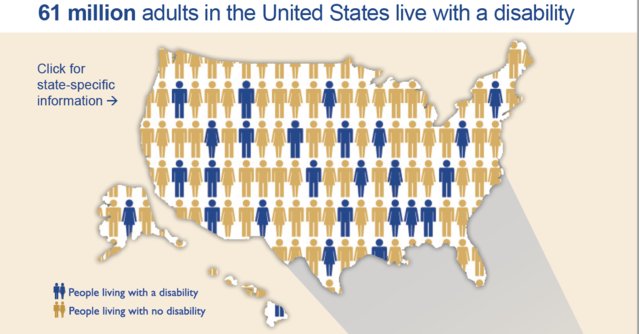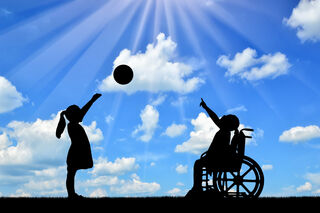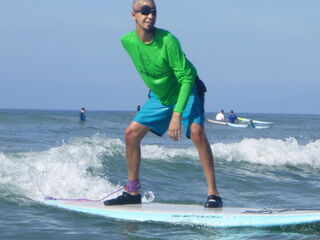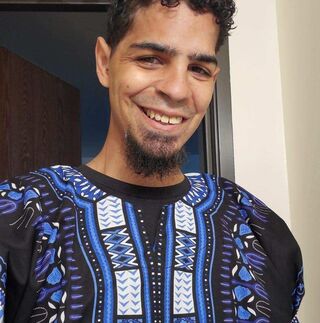Confidence
The Importance of Inclusivity in Sports
How adaptive athletes dominate their worlds.
Posted September 1, 2022 Reviewed by Michelle Quirk
Key points
- More than 1 billion people worldwide have a disability.
- Sports help people learn skills that are transferrable to other areas of life.
- Organizations that focus on providing adaptive sports opportunities are having a major impact on people's lives.
Sports are an integral part of American culture. According to the U.S. Bureau of Labor Statistics, participation in sports and exercise continues to rise. In addition, sports participation can build confidence and community, enhance communication skills, and teach leadership skills and additional skills that can transfer to other areas of life.
With all of the social and health benefits of sports, we might assume that everybody should participate in some form of sports and exercise. However, some feel as if they don’t have enough athleticism to participate, others are afraid of being judged, and some lack access to equipment.
One group that faces additional challenges in participation is adaptive athletes, people who have a medical disability that impacts their mobility, cognitive functioning, or both. Most people will experience some form of disability during their lifetimes, like a sore back, pulled muscles, or a broken arm. Many of these issues are temporary, but there are approximately one billion people worldwide with disabilities, and, in the United States, 61 million adults live with permanent disabilities. Adapted sports are sports that are adapted to meet the functional abilities of people with disabilities (Lundberg et al., 2011).

What Is Disability, What Are Barriers, and Why Is This Important?
A disability, according to the Centers for Disease Control and Prevention (CDC), is "any condition of the body or mind (impairment) that makes it more difficult for the person with the condition to do certain activities (activity limitation) and interact with the world around them (participation restrictions).” People with disabilities often face barriers, defined by the World Health Organization (2011) as “Factors in a person’s environment that, through their absence or presence, limit functioning and create disability."
The WHO (2011) includes physical barriers (e.g., difficulty navigating space such as blocked sidewalks), stereotypes and poor attitudes from others (e.g., thinking people who live with disabilities can’t do something), lack of access to technology or devices (e.g., prosthetics and sports equipment), and services, systems, and policies that impact people with disabilities’ ability to participate (e.g., buildings without wheelchair ramps or with uneven walking surfaces).
It is important for people to know the definition of disabilities and the barriers people with disabilities face so that we can work together to make lasting changes. Large-scale attention spread within this population after the passing of the Americans with Disabilities Act on July 26, 1990.
In addition, there are many sporting organizations that have made efforts to be inclusive. We can learn from these organizations and try to make a difference both individually and collectively to make the sporting world a more inclusive place.
Miracle League of Connecticut and Oak Hill Schools Adaptive Sport and Fitness

Miracle League of Connecticut and Oak Hill Schools Adaptive Sport and Fitness are two organizations whose mission is to provide inclusivity in physical activities for people of different ages and abilities. These facilities helped researchers from Central Connecticut State University (Martin & Tan Leng Goh, 2022) provide a framework for understanding how to help parents with children who live with disabilities learn about stress management. The researchers discovered that parents appreciated meeting other parents who had similar stressors, and they were pleased to find facilities that had quality adaptive sport and fitness opportunities for their children. The researchers said the children who participated in their study, according to their parents, developed community through friendships, gained a sense of belonging, and experienced improved self-empowerment.
What You Can Do: This is important information to share with our local communities. We can talk with our community centers, fitness and gym locations, and youth sports organizations and advocate to ensure “every child has a chance to play.”

Project Koru
Project Koru’s motto is “Cancer Takes. We Give Back.” This organization, led by Executive Director Beth Peck, helps young adult (ages 18-40) cancer survivors develop strength and empowerment. They have multiple programs known as the Koru Continuum, which includes a one-week surf camp held in tropical locations such as Maui, and a one-week snowboard camp held in Oregon.

Cancer impacts people in different ways, and this may include permanent physical and cognitive disabilities. A multidisciplinary team of researchers (Armitano et al., 2015) found that young people with disabilities who participated in a surfing program experienced increased physical and core strength and self-confidence. Project Koru has a community of more than 600 young adult cancer survivors, and 99 percent reported that learning a new sport or movement at Camp Koru increased their confidence and body-positive feelings. According to Peck, the survivor-led Project Koru Equity and Inclusion Committee aims to “improve the representation of the AYA [adolescent and young adult] community and ensure we are providing a supportive environment for survivors of all backgrounds and demographic characteristics.”
One camper, Alex Thompson, experienced several permanent medical issues as a result of his cancer treatment. He attended surf camp in Maui and was pleased with the inclusive practices. Initially, he thought he was not going to be physically able to surf as a person with one arm; however, he was happy that he tried:
When we were getting ready to go out I thought that I wasn’t going to be able to get up [on a surf board], but guess what...I was the first one up!! When I was surfing that week I felt free, energized, and strong—strong like Winter the Dolphin. I wasn’t disabled while I was surfing; I was equal.
What You Can Do: Learn about sports that are not on stable surfaces like surfing, snowboarding, ice hockey, and swimming and work to understand how you can volunteer in your community. In addition to Project Koru, Life Rolls On and Dare to Tri provide opportunities for people to help athletes living with disabilities learn new sports.
Bank of America Chicago Marathon
The Bank of America Chicago Marathon is one of the most prestigious marathons in the world and is classified as one of the six Abbott World Marathon Majors. This event is well-known for its inclusive course that has both an invited field and open field for wheelchair athletes. Among these athletes in 2022, 11 different countries are represented, two defending champions will return (Tatyana McFadden and Daniel Romanchuk), two world marathon record-holders will race (Marcel Hug and Manuela Schar), and more than 15 Paralympic athletes will race.
What You Can Do: Walk around your community and see if it is wheelchair accessible. Look at the sidewalks, hallway length, and building accessibility. If you notice problems, bring this up to your community and ask for accessible resources. You can also watch sports like wheelchair racing or basketball, and read about the athletes who are dominating their sports.
Warrior Games
Warrior Games began in 2010 and “celebrates the resiliency and dedication of wounded, ill, and injured active duty and veteran U.S. military service members.” Both U.S. and international athletes can participate in competitive adaptive sports including archery, cycling, sitting volleyball, swimming, track, field, wheelchair basketball, indoor rowing, powerlifting, and wheelchair rugby. Dr. Russ Flaten, certified mental performance consultant, supported the Warrior Games and was inspired by the athletes he encountered:
Adaptive sports are nothing short of inspiring. Many of the athletes that I have either worked with or spent time with have shared how much the experiences and camaraderie have impacted their attitude and development. I think it is critical for inclusivity in sport because of the impact on mental well-being, skills, and relationships—regardless of status.
It is also noteworthy that sports participation can help veterans who experience symptoms of posttraumatic stress disorder (Whitworth et al., 2017).
What You Can Do: Learn about veteran needs in your community and volunteer to provide assistance during adaptive events. If your community does not have adaptive opportunities, talk with community members about the positive impacts that people can experience by feeling welcomed and included in their towns, including sports participation.

Adapting to the Call for Inclusivity
We can learn from organizations that strive to help adaptive athletes feel they have a place to participate and compete in sports and exercise. An international research team (Legg et al., 2022) specializing in disabilities pointed out that we as a society need to better understand how disability sport leaders can create more participation among adaptive athletes. Their idea of “from the playground to the podium” conceptualizes children’s sport participation through elite adult competitions and encourages us to eliminate physical barriers, sport-specific parries, and social/cultural barriers. We can take the time to understand the unique needs in our communities and ask our local sports organizations to ensure that all have the opportunity to engage in sports.
References
Armitano, C. N., Clapham, E.D., Lamont, L. S., & Audette, J. G. (2015). Benefits of surfing for children with disabilities: A pilot study. Palaestra, 29(3), 31-34
Legg, D., Higgs, C., Douer, O. F., Bukhala, P., & Pankowiak, a. (2022). A framework for understanding barriers to participation in sports for persons with disability. Palaestra, 36(1), 13-20.
Lundberg, N. R., Taniguchi, S., McCormick, B. P., & Tibbs, C. (2011). Identity negotiating: Redefining stigmatized identities through adaptive sports and recreation participation among individuals with a disability. Journal of Leisure Research, 43(2), 205–225. http://doi.org/d6jk
Martin, M. & Tan Leng Goh. (2022). Adaptive sport participation: A winning formula for parents and their children. Palaestra, 36(2), 30-35.
Whitworth, J. W., Craft, L. L., Dunsiger, S. I., & Ciccolo, J. T. (2017, June). Direct and indirect effects of exercise on posttraumatic stress disorder symptoms: A longitudinal
study. General Hospital Psychiatry, 49, 56–62. http://doi.org/d6kf
World Health Organization, International classification of functioning, disability and health. Geneva:2001, WHO. p. 214.




